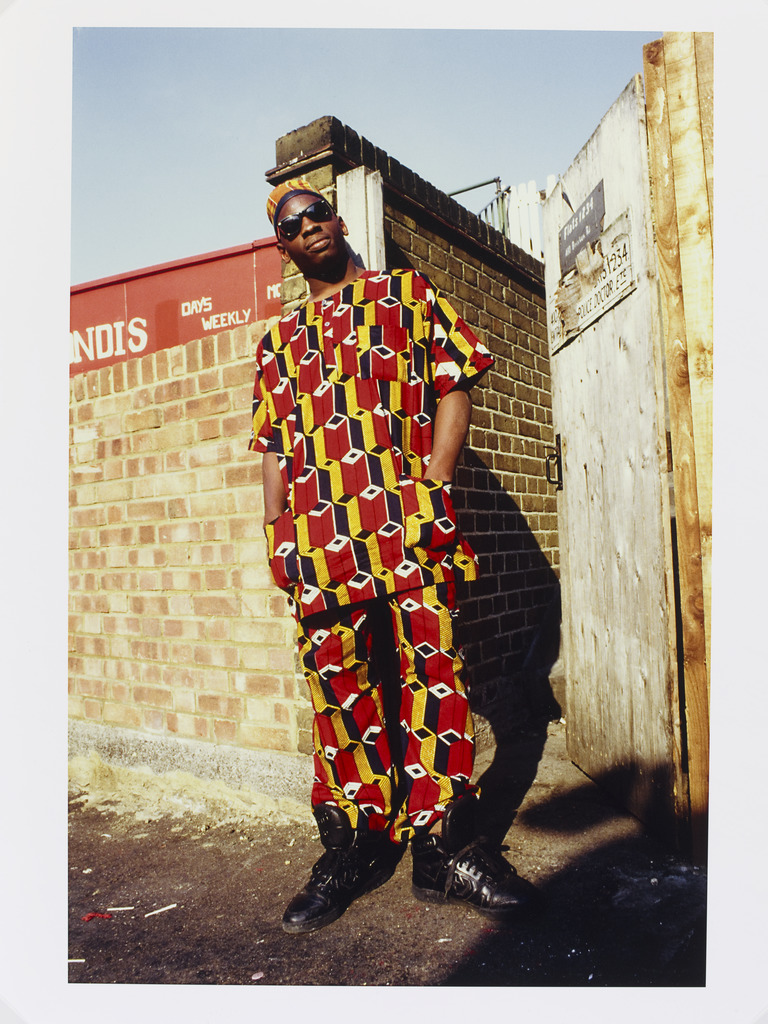The V&A is celebrating Black History Month by highlighting the fantastic and creative work of Black artists and designers. This week, we are looking at the work of Althea McNish, Normski, and Oluwaseyi Sosanya, who all work with textiles in new and exciting ways.
Textiles are a type of cloth or woven fabric. Have you ever looked at all the different textiles around you? What textiles can you find in your home, on public transport, at school? Have you ever thought about how they are made and who decides the colours, patterns and shapes of all these textiles?
Explore lots of different kinds of textiles in the V&A collections.
Textile designers come up with ideas that are woven or knitted into cloth, or printed on fabric. Look at this piece of dress fabric by textile designer Althea McNish. McNish was an internationally renowned textile designer, starting her career in London in the 1950s. Originally from Trinidad and Tobago, she designed fabric for famous design houses, including Liberty and Dior. In 1966 she designed textiles for Queen Elizabeth II’s royal visit to Trinidad and Tobago. She was very involved with the Caribbean Artists Movement, an influential cultural group celebrating the contributions of Caribbean writers, artists and designers in the UK in the 1960s and 1970s. She drew a lot of her inspiration for her textiles from nature – including colourful flowers and plants.
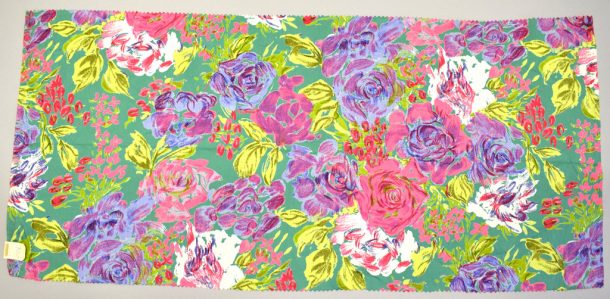
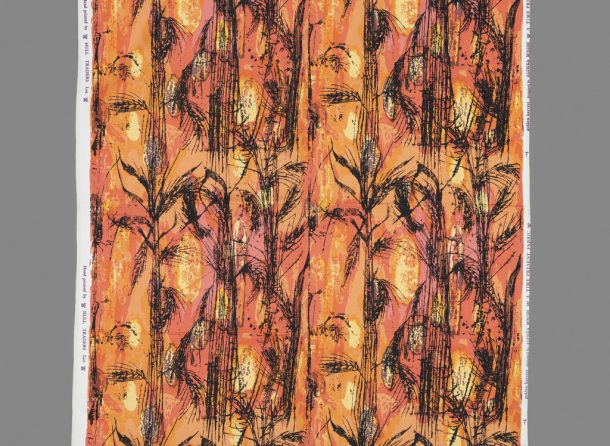
Let’s design a textile pattern inspired by nature
- To start, find something from nature that inspires you. This could be a flower, a plant, a tree, a leaf or an animal from your local park, garden or from your window. Have a go at sketching it out.
- From your sketch, select your favourite part, ideally something simple. On a separate piece of paper, draw that part multiple times to create a repeating pattern – you could create a template if this helps. Before you start drawing, think about how you want your pattern to be organised. Could you rotate or change the scale or colour of your selected part each time you draw it?
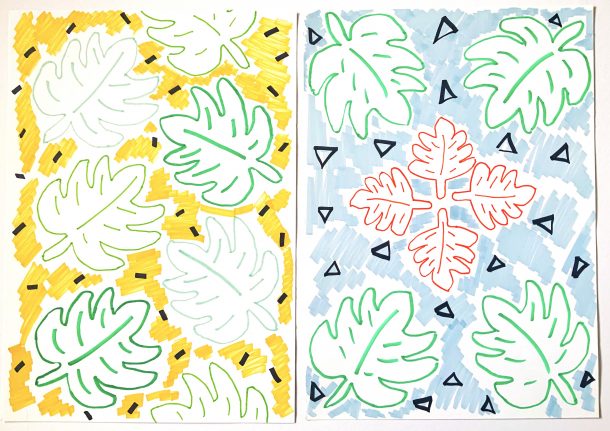
What would you use your textile for? What do you think your design could be used for around the home? Could it be a rug? A duvet cover? An item of clothing?
Let’s design an abstract pattern
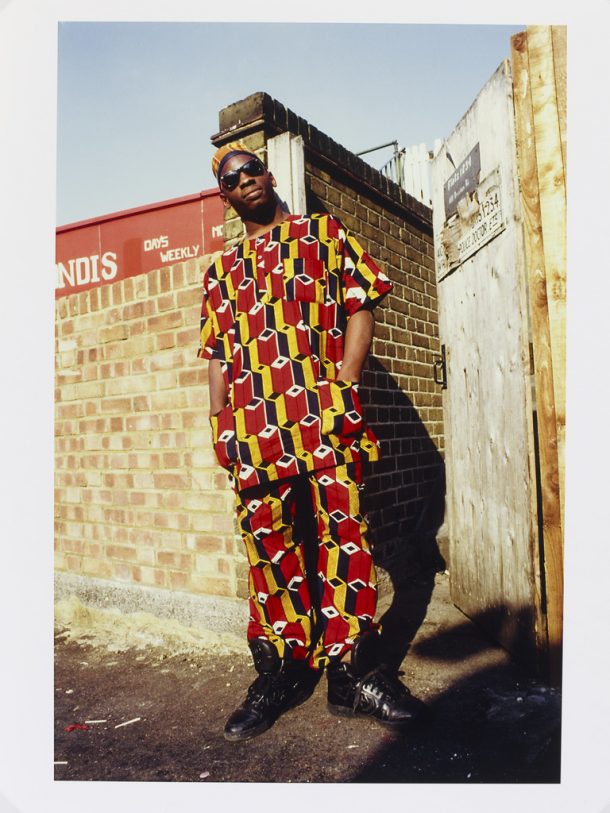
Textile designers create designs using all sorts of different patterns and colours. Take a look at this outfit made from Kente cloth, put together by photographer Norman ‘Normski’ Anderson and the clothing company Four Star General. Kente cloth is a woven textile from Ghana, West Africa. It is thought that ’Kente’ comes from the word Kenten, which means ’basket’ in Akan, a language spoken in Ghana. This is because the cloth is woven together, like a basket. Many of the colours and patterns used have different meanings and are worn for special occasions. In this piece, Normski wove together Kente cloth to create an entirely new design. What shapes can you see in the pattern? Do they remind you of anything? Perhaps building blocks? Or shapes you might find in architecture?
Now let’s design our own abstract pattern.
- To start cut multiple copies of different shapes out of coloured paper. Try stacking multiple sheets of paper, so you can cut lots copies of the same shape all at once.
- Now start arranging your shapes to create an abstract pattern. Try out:
– Rotating your shapes in different directions
– Layering shapes with ones of different colours
– Flipping over half of your shapes and then creating a line of symmetry - After playing with a few different compositions of patterns, stick your shapes down on a piece of paper.
- Now your pattern is stuck down, think about how you could bend, fold or curve your design into a 3D shape. Could your design be a piece of clothing or jewelry, a household product or a piece of sculpture?
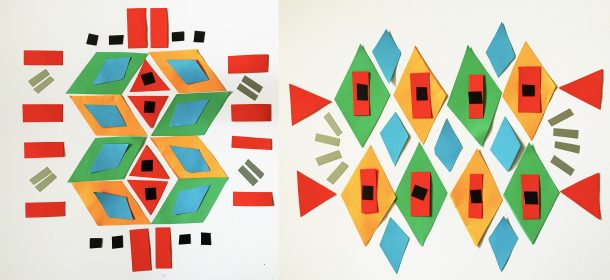
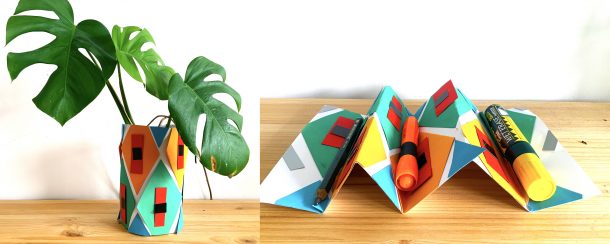
Let’s play with weaving!
So far in this activity you have been looking at examples of woven fabrics. Check out this video to find out more about the weaving process.
https://www.youtube.com/watch?v=K6NgMNvK52A
Now have a go at creating your own simple woven surface using different materials.
- Firstly cut, make or find 10 different lengths of any flexible material. You could do this with paper, fabric, ribbon, pipe cleaners, wool, old shoelaces, twigs, leftover cooked spaghetti or even bread dough.
- Have 5 of your lengths positioned in an upward direction evenly spaced apart – this is called the warp. You could tape these down to a surface at one end to make the next step easier.
- Now weave 1 of your remaining 5 lengths in a horizontal direction – this is called the weft. To do this, go over the first vertical length, and then under the second vertical length. Repeat going over, under, over until you reach the end of the row. Repeat this with all 5 horizontal lengths – alternating an under or over start with each new length.
- If using paper, you could tape the underside of your weave to hold it in place.
- Try weaving with different material or colours, or adding in more lengths.
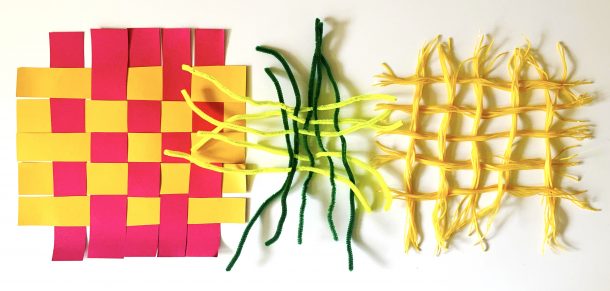
Now that you have created a woven surface, discuss with the people around you what else you could weave?
Oluwaseyi Sosanya is a designer and engineer who looks at art and design, and how humans interact with machines to get inspiration for his engineering projects. In this video, you can see how he explores 3D printing with weaving to create entirely new inventions!
https://www.youtube.com/watch?v=D7ZpQCGxjY8&feature=youtu.be
Inspired by Oluwaseyi’s woven shoe soles, can you imagine how you could create different 3D designs using weaving? What would you make… a building, a bridge, a playground?
Sketch out your ideas and share with us on social media using #LetsMakeWednesdays
